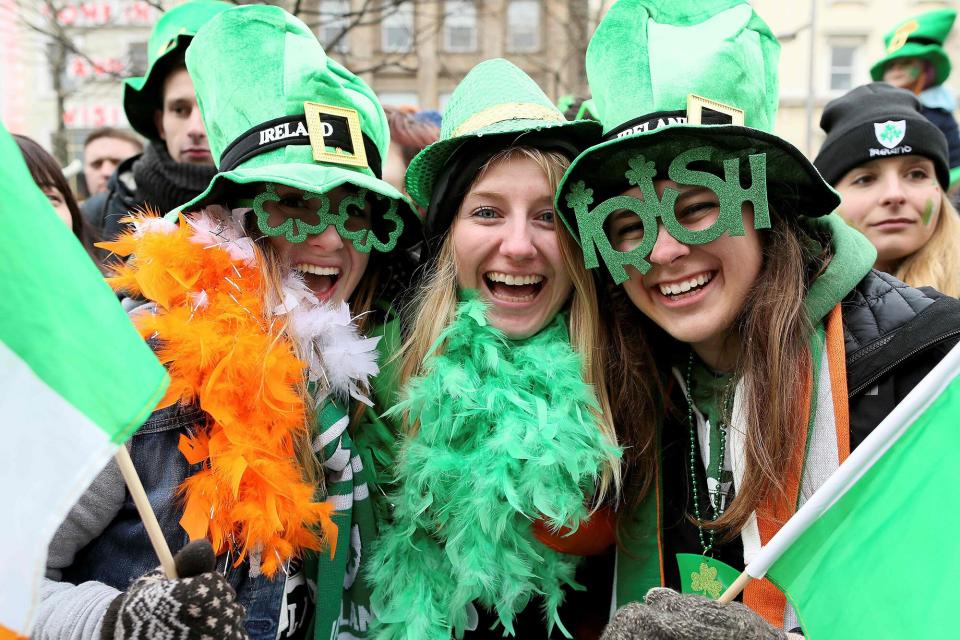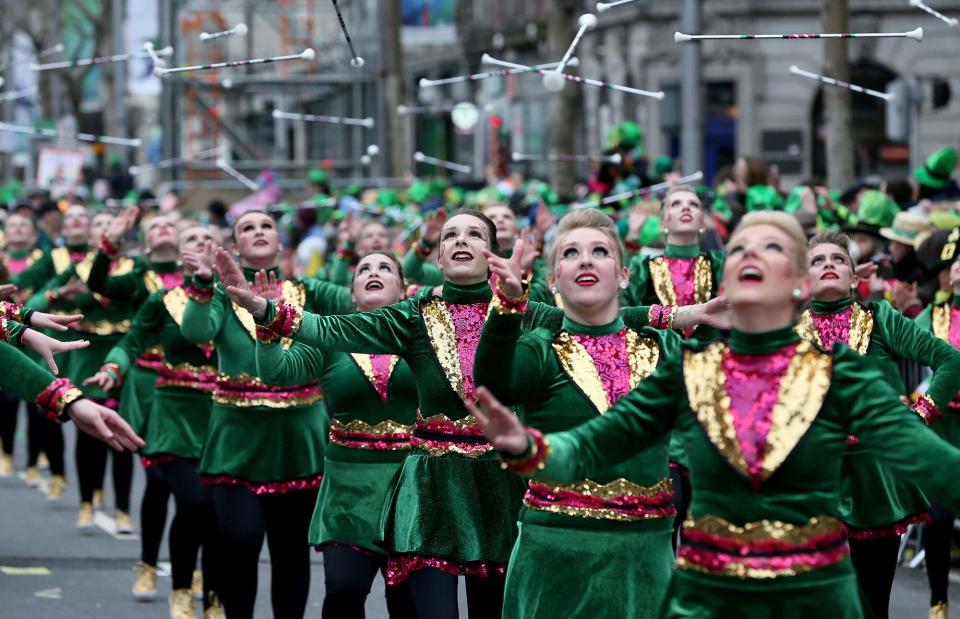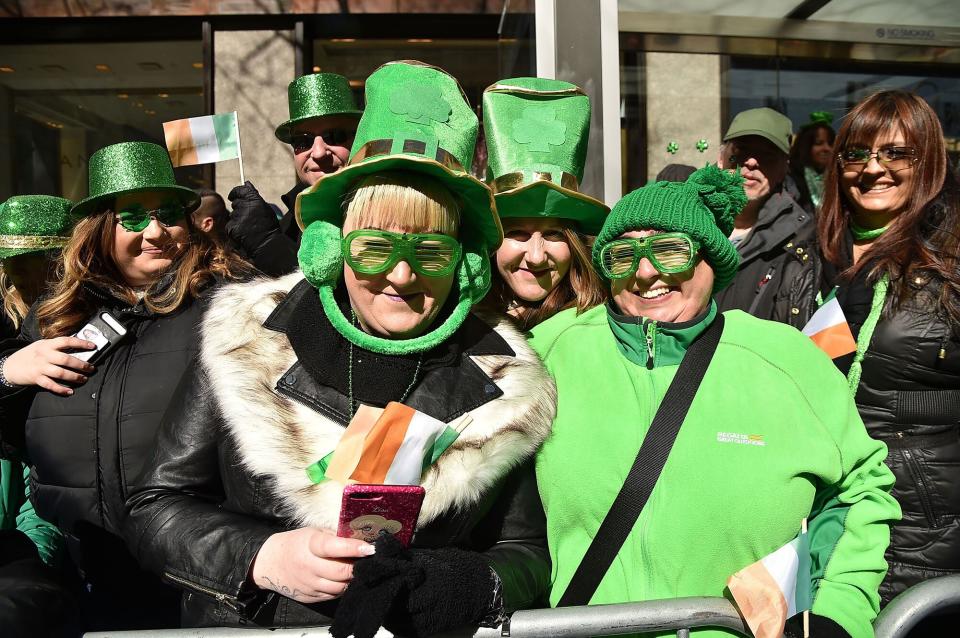8 St. Patrick's Day Facts You Never Knew Before

Did you know that wearing head-to-toe green and drinking Guinness actually have nothing to do with the real Saint Patrick?
Even more surprising? Saint Patrick isn’t even his real name. Here are eight St. Patrick’s Day facts that’ll have you saying “Irish I knew that sooner!”

Paul FAITHPAUL FAITH/AFP/Getty Images
Saint Patrick was actually British.
Although he’s one of Ireland’s most celebrated figures, Patrick was born around the year 390 in what is now England, Scotland or Wales. As the story goes, he was kidnapped into slavery at age 16 and brought over to Ireland. He then escaped to a monastery in Gaul (around present-day France), where he converted to Christianity. That’s where he became a priest and then eventually a bishop. He returned to Ireland in 432 as a missionary, where he played a major role in converting the Irish to Christianity. After his death, he was named Ireland’s patron saint.
His real name was Maewyn Succat.
Yes, you read that correctly. Maewyn Succat was his name until he changed it to Patrick when he became a bishop.
March 17 is not Saint Patrick’s birthday.
St. Patrick’s Day observers who might have thought they were celebrating the saint’s birthday will be surprised to learn that March 17, 461 AD is actually the day he died.

PAUL FAITH/AFP/Getty Images
RELATED: All of the Lucky Celebs Born on St. Patrick’s Day
The first St. Patrick’s Day parade happened in America, not Ireland.
The first parade took place in New York City in 1762. With an increase of Irish immigrants coming into the United States, St. Patrick’s Day quickly became a widespread holiday. According to Metro NY, approximately 150,000 people generally participate in the New York City parade each year and around 2 million people come out to watch. After the parade was canceled due to the COVID-19 pandemic in 2020 and 2021, it's back in 2022.
It used to be a dry holiday.
St. Patrick’s Day was considered a religious holiday in Ireland for most of the 20th century so all pubs would close on March 17. Once it became a national holiday in 1970, everything changed and pubs became a go-to spot for many to celebrate.
Everyone should be wearing blue, not green.
Blue was actually the color that was most associated with Patrick and green was considered unlucky. Blue is still considered symbolic of Ireland — so how did green become the go-to hue for those who don’t want to get pinched?
Historically, green has been the color that’s been linked to a series of Irish rebellions that took place in order to gain independence from the English crown. The color stuck once waves of Irish immigrants made their home in America and began wearing green and carrying the Irish flag to show their pride for their home country.

Theo Wargo/Getty Images
The shamrock was NOT originally used as a teaching tool.
Many believe that St. Patrick used the three-leaf clover to teach others about the Christian Holy Trinity (the Father, the Son, and the Holy Spirit) but that hasn’t been proven to be true. However, the number three was a sacred number in Irish mythology, so it does make sense for the shamrock to hold that connection to the Holy Trinity — just likely not in an instructive way.
There are no female leprechauns.
Ever wonder why you’ve never seen a lady leprechaun? The answer is: They don’t exist! There has been no record of female leprechauns and what’s even more interesting is that leprechauns are considered to be part of the fairy family. Some have even said that leprechauns are the rejected fairies who have been ousted by the fairy community, which explains why they’re usually described as grouchy creatures who are prone to mischief.